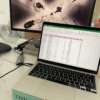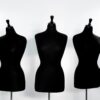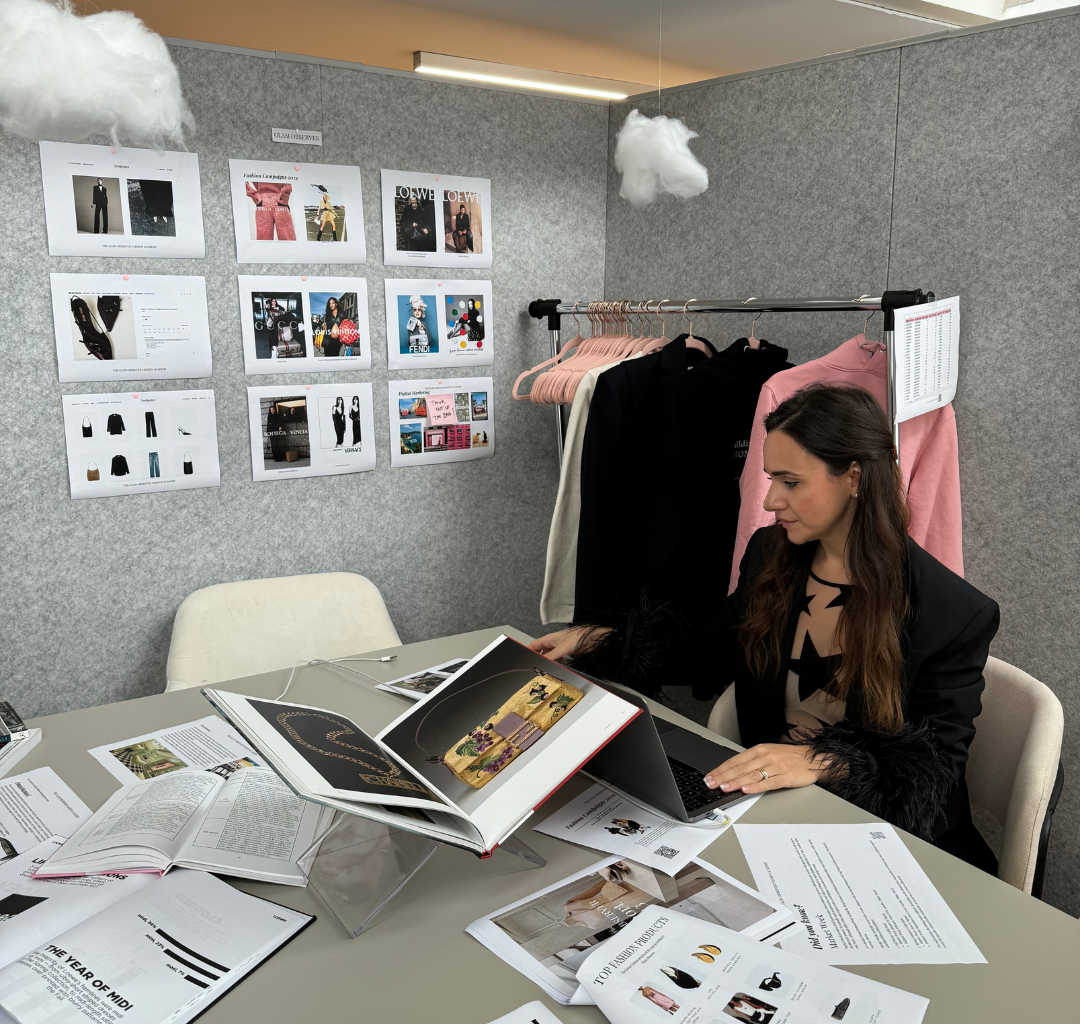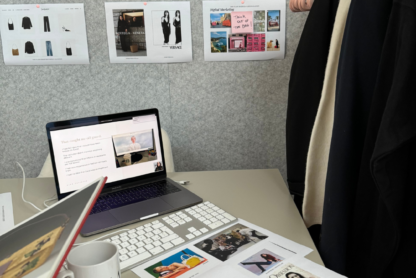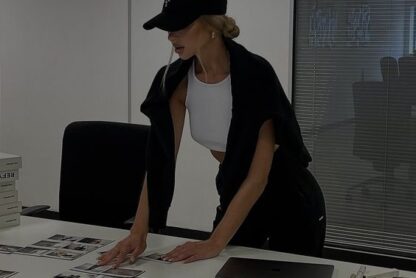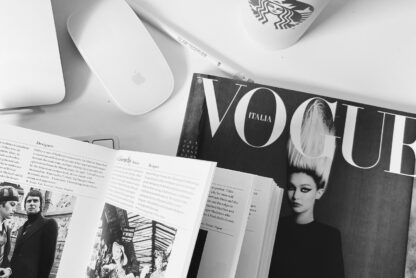Stepping into the world of fashion for the first time is exhilarating and nerve-wracking at the same time. I remember the day I started my internship at Alexander McQueen in the e-commerce department. At that time, McQueen’s offices were housed in the Bottega Veneta building in Milan—a huge structure with a beautiful garden where we often took our lunch breaks. There was even a canteen for employees and a gym. Yes, I took advantage of the perks that come with working for a luxury company, sneaking in 45-minute Pilates classes followed by a quick lunch whenever I could.
Behind the Scenes: What to Expect on Your First Day at a Fashion Company
The first day, though? That was something else. Entering the building was both intimidating and exciting. It was all dark inside, with perfectly placed lights that created the luxurious ambiance typical of high-end fashion. The floor where I worked was where the e-commerce account managers handled the business for all the Kering brands, like Balenciaga, YSL, and Brioni. It was an open space, with desks placed together in clusters. I was seated right in the middle of my supervisor and a merchandiser named Sara. She handled the merchandising for all the brands in the group. Sara was fun and friendly, which made things a bit easier. However, I still remember the nervousness of walking in that first day, not knowing what to expect.
Just like you, I had questions, concerns, and plenty of jitters. I didn’t know how my day would unfold. However, if I can offer one piece of advice, it’s to enjoy the experience—you made it! Now, let’s take the pressure off and explore what really happens behind the scenes in a fashion company, so you can walk in on your first day with confidence.
The Organizational Structure of A Fashion Company
Before you dive in, it’s helpful to understand how a fashion company works from the inside. Fashion companies typically have several key departments, each with a specialized focus. These teams collaborate to bring products from concept to consumer. Here’s a breakdown of the main departments:
- Design and Development: The heart of the brand, where ideas are born. Designers sketch collections, and product developers ensure designs can be produced efficiently.
- Merchandising and Buying: These teams manage product assortment, choosing which items will be produced and how many. They balance creative vision with consumer demand.
- Marketing and PR: This department shapes how the brand is presented to the world. From social media campaigns to influencer partnerships, they ensure the brand stays relevant and visible.
- E-commerce and Digital: With online shopping taking center stage, the e-commerce team manages the brand’s digital presence. They’re responsible for everything from website updates to email marketing.
- Sales and Retail: Whether it’s wholesale or direct-to-consumer, the sales team ensures products reach customers. They negotiate with buyers and track sales performance.
- Production and Supply Chain: These teams work behind the scenes to manufacture and deliver products, coordinating with suppliers and ensuring timelines are met.
No matter where you’re starting, your role will fall into one of these departments. However, the nature of fashion means you’ll often be collaborating with others. To learn more about the departments inside a fashion company check my PDF guide.
What Happens on Your First Day of Your Fashion Job?
1. The Welcome: Orientation and Introductions
Your first day will likely begin with an orientation, giving you a solid understanding of the company’s policies, culture, and operations. At a fashion company, expect to dive into the brand’s history and its place in the fashion ecosystem. Whether you’re starting with a global luxury brand or a smaller design house, there will be a focus on ensuring you understand the brand’s DNA and key players. You’ll probably also receive training on the specific tools or platforms you’ll use in your role, such as inventory systems, e-commerce platforms, or design software.
In my case, at McQueen, it was an e-commerce-heavy introduction. They walked me through the platforms used to track sales, stock, and product updates. But despite all the formal onboarding, the first few hours are often the most intimidating. You’re surrounded by professionals who know the ins and outs of the industry. It’s normal to feel a bit lost but remember, everyone was once in your shoes.
You’ll meet with several people, from the HR to the supervisors (if you are an intern) and the other members of the team. I suggest taking a notebook with you to note down all the information because there will be A LOT on the first days.
2. Setting Up Your Workspace
Once orientation is over, you’ll head to your workspace. Depending on the role and the department, fashion offices can go from a vibrant design studio surrounded by fabrics, mannequins, clothes, and sketches to more corporate-style floors with lots of desks, laptops, and meeting rooms. I remember when I was working in the Bottega Veneta building, we had a big monitor at the entrance with the sales in real-time on a map. It was very nice to see where sales were coming from and what product was sold. To have a better vision of the different environment based on the role you will pursue take a look at the photos from our exhibition in Milan where we built 4 different rooms to give you a better idea of the fashion offices.
My team worked in a large, shared space where we could overhear everything from high-level strategic conversations to quick updates about inventory changes.
Fashion offices are designed for collaboration. You’ll quickly notice that people work closely across departments, bouncing ideas off one another, and making quick decisions. So, while you’re setting up your space, keep in mind that you’ll need to be flexible and open to interactions with others.
3. Getting to Know the Collection
In fashion, your first day will involve getting familiar with the current collection. Whether you’re working in design, marketing, or sales, you need to know the product inside and out. You might spend part of your first day reviewing lookbooks, watching runway videos, or getting a hands-on look at the products.
At McQueen, we were immersed in the details of each collection. I had to familiarize myself with the fabrics, colors, and styles. Even though I already did all my research BEFORE starting the job, which I recommend doing to be able to respond to any question about the collection or the brand they might ask during the job interview. In e-commerce, that knowledge was critical when uploading the new season’s products, making sure the descriptions were accurate, and supporting the broader marketing team with content for the website.
4. Meeting Your Team
Fashion thrives on collaboration, so by mid-day, you’ll likely have your first team meeting. These meetings are fast-paced, filled with updates, feedback, and new ideas. You’ll quickly see that every department—whether it’s design, marketing, or e-commerce—relies heavily on others to make the brand successful.
In my first meeting, we discussed upcoming product launches and marketing initiatives for the website. Sara, my merchandiser colleague, was there to give insights into upcoming trends to look at and products and markets that were performing best. Everyone’s role was interconnected, and it was fascinating to see how each piece of the puzzle fit together.
5. Handling Your First Task
Soon after your introduction to the company and the team, you’ll likely be given your first task. Don’t be surprised if it’s something small, like reviewing product descriptions or updating stock information. These initial tasks might seem minor, but they offer you a chance to get comfortable with the systems and expectations in place. In fashion, attention to detail is critical, so even the smallest tasks play an important role.
When I started at McQueen, one of my first tasks was analyzing daily sales and stock levels. It gave me an understanding of how the business side of fashion works and how every decision we made impacted sales.
Fashion Company Culture: What to Expect
1. The Fast Pace of Fashion
Fashion is fast-paced and constantly evolving. During peak seasons—such as Fashion Week or a new collection launch—the pace will only intensify. Your first day might feel overwhelming, but this fast-moving environment is also what makes the fashion industry so exciting. You’ll be expected to keep up, be proactive, and think on your feet.
2. Style and Appearance
In fashion, how you present yourself is important, but office style can vary widely depending on the company culture. At McQueen, it was a mix—most of us wore jeans paired with t-shirts, blazers, and loafers, so more casual looks that suited the fast-paced environment, while others took a more polished approach. But if you were wondering, no, we were not wearing McQueen! Most of my colleagues had pieces from Kering brands, mainly bags, but when I first started, I was just admiring them from afar. As an intern, you likely won’t be able to afford them, even with employee discounts.
When you work in fashion there are always people who dress more casual and people who play with clothes more especially if they are in a creative position such as styling or design. You’d see women in stylish ensembles that looked straight out of a runway show and men in full suits, especially those in more client-facing roles or senior positions. The variety in how people dressed reflected both personal style and the diverse nature of the industry, where creativity meets professionalism. While there’s no strict dress code, dressing in a way that feels authentic to you and the brand is always a good idea.
3. Building Relationships
The fashion industry is built on relationships, both inside and outside the company. You’ll find that networking within your team and across departments is key to your success. On your first day, take the time to get to know your colleagues. In fashion, collaboration is constant, so the sooner you build rapport, the better.
Your first day at a fashion company is a major milestone. While the industry is fast-paced and demanding, it’s also filled with creativity, excitement, and opportunities for growth. Remember that everyone starts somewhere—whether it’s in e-commerce at McQueen or design at a smaller label—and the best way to make the most of your first day is to be curious, proactive, and open to learning. You’ve already made it this far, so take a deep breath, soak in the experience, and enjoy the journey ahead.
Did you find your dream job in fashion? I am hosting a free masterclass where I share strategies to jumpstart your career in the industry.
Follow us on Instagram!
